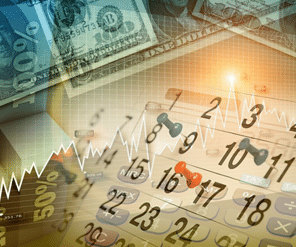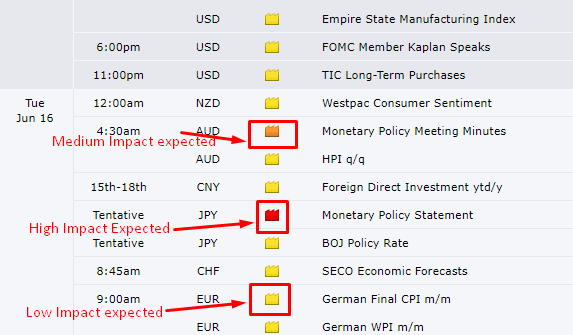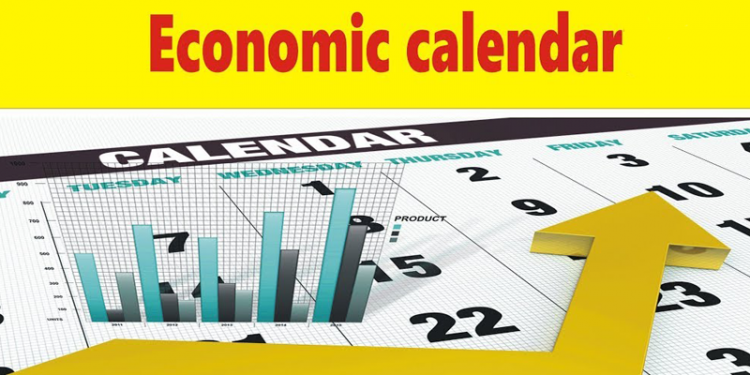What economic calendar?

The economic calendar is the list of upcoming events in chronological order that impact the direction of the forex market. These news events include press releases by significant companies, the central banks of countries, and even government agencies. Other events that qualify to appear in the list are comments by notable personalities and minutes of meetings of central banks’ policy organs.
Using the economic calendar to inform trading activities is what investors call news trading. News trading is as much a strategy as is trend trading or position trading. However, the news could also facilitate the formulation of other strategies. The news makes up the bulk of the fundamental analysis.
How to read the economic calendar
An economic calendar is a critical tool with which investors use to increase the chances of profitability. Besides, the tool helps users to avoid event risk. In forex investors’ parlance, event risk is failing to anticipate an event that moves markets. Even the best forex indicators cannot protect you from event risk. Therefore, one of the many trading tips that you need is how to read the economic calendar.
An economic calendar contains economic data reports and news events such as rate cuts/raises by central banks. It means every region has news events that affect currencies from that region.
Step 1: Identify a suitable economic calendar
The first step to reading an economic calendar to find one. Many entities, including the MetaTrader platform, offer up-to-date economic calendars. Other entities like Forex Factory, DailyFX, Baby Pips, Investopedia, and FxEmpire, among others, provide economic calendars. While each entity’s calendar is similar to the other, differences arise in how they identify high impact news events.
Step 2: Note the impact markers.
Different economic calendars have different layouts. In the Forex Factory layout (shown in the figure below), for instance, each news event has an impact marker. After analyzing the expected content of the news event, Forex Factory assigns impact magnitude on each one.
For example, the Bank of Japan’s monetary policy statement is likely to have a significant impact on the price of the JPY. That is why the news event has a red marker showing “High Impact Expected.”
A brown impact market shows that the influence of the news event on the movement of currency in question is medium. For example, the new event in focus in the image below is minutes from a monetary policy meeting of Australia’s Reserve Bank (RBA). While the news might affect the direction of AUD’s price direction, this impact might not be substantial.
Lastly, the yellow impact marker implies the news event’s influence on the currency in question is low. Investors might not take off the news, but most of them might not price it in their trades. As a result, the market is unlikely to feel any significant change in direction after the news release.

Step 3: Check the calendar every day
Well, economic events are a daily phenomenon. If you rely on news to create trading strategies using fundamental analysis, you need to keep your ears open for all relevant news items. Economic activities take place around the clock. As such, there is always data that needs to be released for consumption by relevant stakeholders.
Step 4: Customize the calendar to suit your interests
For starters, each news event affects a certain currency. News from Japan, for instance, will move markets that involve the JPY. If your interest is in the USD/JPY pair, you can customize the calendar to give you news events that affect these two currencies. This way, you will get timely data to enable you to determine where the entry and exit points should be for maximized profits.
Why does the economic calendar matter?
In forex trading, there are three types of people. First, there are the market technicians. These investors develop trading strategies using different technical indicators. The technical analysis primarily focuses on price movements. Technical investors might use forex expert advisors to gather and to analyze market data, after which they use the insights to set price targets.
Second, their market fundamentalists. These investors are entirely reliant on fundamental analysis to look for trading opportunities. In fundamental analysis, investors primarily focus on news events. Also, fundamental analysis is ideal for investors who want to hold positions for a long time.
Lastly, some investors take a bit on both sides. These investors may want to benefit from scalping but also holding position trades. Many traders that rely on both fundamental and technical analysis are risk-takers who like to hedge their positions.
In all three instances, the economic calendar is critical. For market technicians, the calendar helps them to anticipate the direction of price action. Market fundamentalists, on the other hand, use the calendar to determine the high probability set up for position trades.







